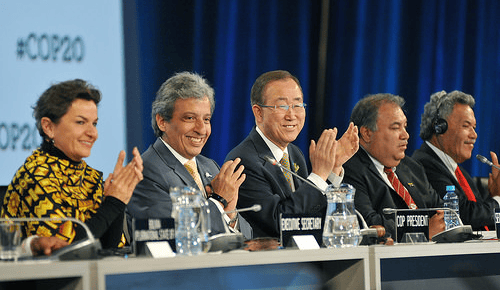
Almost two days later than scheduled, the 20th Conference of the Parties (COP20) in Lima, Peru, closed on Sunday, December 14th adopting a set of 32 documents aimed at progressing towards the definition of the new deal to be agreed at the COP21 in Paris next year.
Central element of the Lima deal are the Intended Nationally Determined Contributions (INDCs) which include in one term both developed and developing countries’ plans to fight climate change from 2020 on. All Parties are, indeed, invited to communicate them to the UNFCCC well in advance of the COP21 (the not mandatory deadline remains March 31, 2015). In addition, Lima made progress in elaborating the elements for a draft negotiating text that has been included as an Annex to the document and that would be the base for the future negotiating draft text to be released by May 2015.
Mayor outcomes of the deal can be summarized as follows:
- common but differentiated responsibilities and respective capabilities, in light of different national circumstances: developed and developing countries have both to act to cut their carbon emissions but considering their different financial and infrastructural capacities;
- Greenhouses gas plans: the document reiterates its invitation to all Parties to communicate their intended nationally determined contributions (INDCs) by the end of March 2015 in order to facilitate clarity, transparency and understanding. The information provided may include quantifiable information such as time frames and / or periods for implementation, scope and coverage, planning processes, assumptions and methodological approaches including those for estimating and accounting for anthropogenic greenhouse gas emissions. INDCs will be published on the UNFCCC website by the UN climate change secretariat which will prepare by 1 November 2015 a synthesis report on the overall climate effect of the INDCs communicated by Parties;
- Loss and Damage: a “loss and damage” mechanism was established to protect developing countries particularly vulnerable to the adverse effect of climate change in order to receive economic compensations;
- Climate finance: the document urges developed countries to provide and mobilize enhanced financial support to developing countries for ambitious mitigation and adaptation actions. Donations to a Green Climate Fund, launched to help poor countries cut their GHG emissions and adapt to climate change, have already surpassed the $10bn.
For more information:
- The full text of the deal
- The summary of key outcomes provided by the United Nations Framework Convention on Climate Change
- Overview of decisions adopted at COP20 and CMP10
- The infographics realized by the Italian Climate Network, a synthesis of the Parties’ different positions


